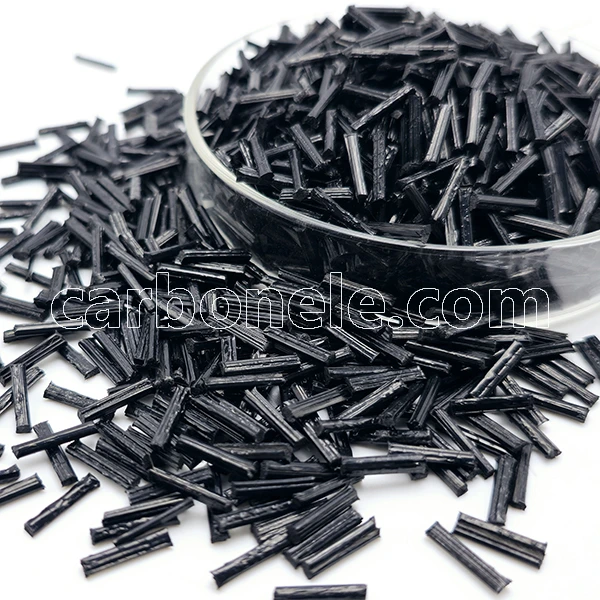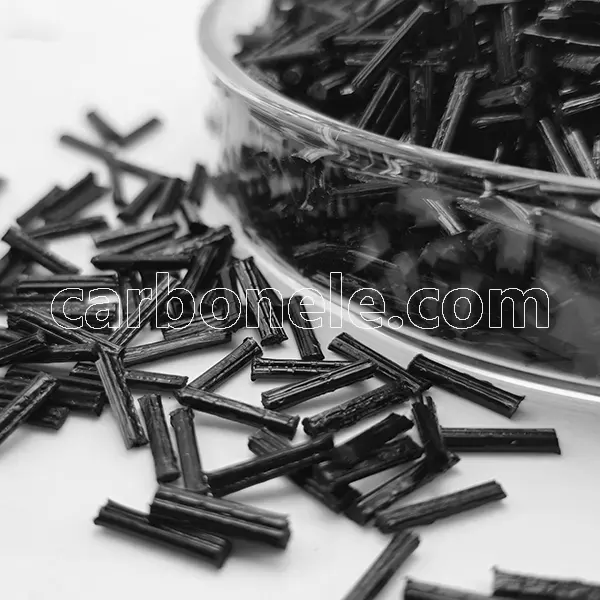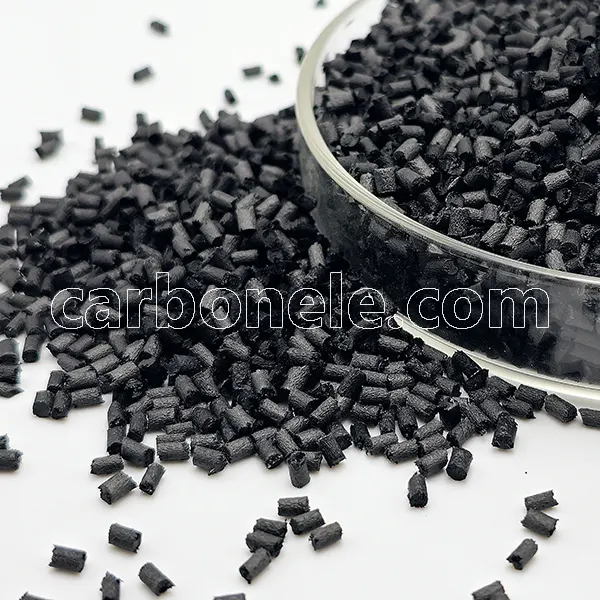Top 10 Applications Of CF-R Thermoplastics In Replacing Metal - Carbon Fiber Compounds Manufacturer | Supplier
Carbon Fiber Reinforced Thermoplastics (CF-R Thermoplastics) are revolutionizing modern manufacturing by offering superior alternatives to traditional metal components. With exceptional strength-to-weight ratios, corrosion resistance, and design flexibility, materials like PA66 CF30 are ideal for replacing metal in automotive, aerospace, industrial, and consumer applications.
Carbon Xiamen provides high-performance CFRTP solutions that deliver significant weight reduction, cost efficiency, and sustainability benefits. Our technical expertise ensures optimal material selection and seamless integration into your production processes.
Explore how our advanced composites can enhance your products while reducing environmental impact. Visit www.carbonele.com to discover the future of lightweight engineering.
The Engineer’s Dilemma: Metal Weight vs. Polymer Performance?
Imagine a conversation between a design engineer, Sarah, and a materials specialist, David.
“David, I’m stuck,” Sarah begins, frustration evident. “The client wants this automotive bracket 40% lighter, but it must maintain its structural integrity under the same load. We’re using aluminum, and I’ve hit a wall. Any ideas?”
David smiles. “You’re thinking about the problem correctly, but perhaps with the wrong material set. Have you considered **CF-R Thermoplastics** like PA66 CF30? It’s a game-changer for **Replacing Metal** in exactly these scenarios.”
“Plastic? For a structural bracket? Won’t it creep or fail under heat?” Sarah asks, skeptical.
“Not this kind,” David explains. “This is carbon fiber reinforced polyamide 6/6. The continuous carbon fibers provide strength and stiffness rivaling metals, while the thermoplastic matrix offers toughness and design freedom. The specific strength—strength-to-weight ratio—is often double that of aluminum. **Replacing Metal** here isn’t about compromise; it’s about upgrade.”
He pulls up a comparative datasheet on his screen:
| Property | Aluminum 6061 | PA66 CF30 (Typical) | Advantage |
|---|---|---|---|
| Density (g/cm³) | 2.70 | 1.33 | 60% Lighter |
| Tensile Strength (MPa) | 310 | 320 | Comparable |
| Flexural Modulus (GPa) | 69 | 20 | High Stiffness |
| Thermal Expansion | High | Very Low | Better Dimensional Stability |
“See?” David points. “You get the weight savings you need, comparable strength, and added benefits like corrosion resistance and the ability to consolidate multiple parts into a single, complex molding. This is the power of advanced **CF-R Thermoplastics**.”
Sarah’s eyes light up. “So, we can actually make it lighter, stronger in some aspects, and potentially cheaper by simplifying assembly? Let’s talk specifics.”
Unmatched Excellence: The Carbon Xiamen Advantage in CFRTP
When discussing **Replacing Metal** with confidence, the quality of the **CF-R Thermoplastics** is paramount. Not all composites are created equal. Carbon Xiamen stands out by engineering materials that are not just alternatives but superior solutions.
Our materials, such as our flagship PA66 CF30, are meticulously formulated to ensure an optimal balance between physical and mechanical properties. The key to our performance lies in:
- High-Quality Raw Materials: We use premium-grade virgin polymers and high-strength, precisely sized carbon fibers. This ensures excellent fiber-matrix adhesion, which is critical for stress transfer and ultimate performance. Unlike cheaper alternatives that might use recycled materials or poor-quality fibers, our consistent input guarantees consistent output.
- Superior Mechanical Properties: Our PA66 CF30 boasts a tensile strength exceeding 320 MPa and a flexural modulus of 20 GPa, making it a formidable candidate for **Replacing Metal** components. Its impact strength is significantly higher than that of glass-filled composites, providing the necessary toughness for demanding applications.
Beyond the datasheet, our modern manufacturing process ensures uniform fiber dispersion and minimal porosity, resulting in parts with exceptional dimensional stability and repeatability. This level of quality is why engineers trust our **CF-R Thermoplastics** for critical applications.
A World of Possibilities: Our CFRTP Portfolio
Understanding that one size does not fit all, Carbon Xiamen offers a diverse range of **CF-R Thermoplastics** tailored for different challenges in **Replacing Metal**.
- PA6 CF30: Excellent for parts requiring high impact strength and good surface finish.
- PA66 LCF40: Features long carbon fibers for even higher mechanical performance and damage tolerance.
- PPA CF40: The high-temperature champion, ideal for under-the-hood automotive or electronics applications where thermal stability is crucial.
Our commitment extends beyond the sale. We provide comprehensive technical support, from material selection and design for manufacturability (DFM) guidance to post-sales service, ensuring your project’s success from concept to production.
Deep Dive: Why CF-R Thermoplastics are Winning Across Industries
The shift towards **CF-R Thermoplastics** is not a trend; it’s a strategic evolution in manufacturing. Here’s a deeper look at the evidence and examples driving this change.
***Expert Insights: The Industry-Wide Shift to Lightweighting***
Dr. Emily Thorne, a leading materials scientist, recently stated, “The adoption of carbon fiber reinforced thermoplastics is accelerating beyond aerospace and premium automotive. We’re now seeing them in mainstream consumer electronics, industrial machinery, and medical devices. The driver is no longer just performance; it’s total lifecycle cost, sustainability through light-weighting, and design innovation. Materials like PA66 CF30 are at the forefront of this democratization.”
A real-world case study involves a European drone manufacturer. They switched from machined aluminum arms to molded PA66 CF30 arms. The result was a 50% reduction in component weight, which directly translated to a 20% increase in flight time—a critical competitive advantage.
***Scientific Data: Quantifying the Advantage***
A 2022 study published in the *Journal of Composite Materials* analyzed the lifecycle energy consumption of components made from aluminum versus **CF-R Thermoplastics**. The study concluded that while the production phase of the composite has a higher energy cost, the significant weight savings during the product’s use phase (e.g., in a vehicle) led to a net reduction in total energy consumption of up to 15% over the component’s lifetime. This makes **Replacing Metal** with high-performance **CF-R Thermoplastics** a sustainable choice.
***Proven in Practice: Carbon Xiamen in Action***
Carbon (Xiamen) New Material Technology leverages its professional R&D team and advanced production facilities to provide robust CFRTP solutions. For instance, our PP GF30 compound was instrumental for a client in designing a corrosion-resistant fluid handling component that successfully replaced stainless steel, reducing costs and improving delivery times.
Another example is our collaboration with a sporting goods manufacturer. They utilized our expertise in **CF-R Thermoplastics** to develop a high-performance bicycle crank arm that is both lighter and stiffer than its aluminum predecessor, enhancing the rider’s efficiency.
***Voices of Satisfaction: Our Clients Speak***
1. **Mark J., Design Engineer, USA:** *”We were hesitant to switch from metal to a composite for our industrial sensor housings. Carbon Xiamen’s technical team guided us through the entire process. Their PA66 CF30 material performed flawlessly in our tests, offering the EMI shielding we needed at a fraction of the weight. The parts have been in the field for over a year with zero issues.”*
2. **Lena W., Procurement Manager, Germany:** *”Sourcing from China can be a gamble, but Carbon Xiamen sets a new standard. The consistency of their CF-R Thermoplastics batch-to-batch is exceptional. They are a reliable partner for our high-volume automotive applications.”*
3. **Carlos R., Product Developer, Mexico:** *”The sample kit and data sheets were incredibly helpful. We chose their PPA CF40 for an under-hood connector and passed all thermal cycling tests. The quality is on par with European brands at a much more competitive price. We’ve placed three repeat orders already.”*
***Addressing Your Queries: CFRTP FAQ***
**Q1: How does the cost of CF-R Thermoplastics compare to metal?**
**A:** While the raw material cost per kilogram can be higher, the total cost of ownership is often lower. This is due to parts consolidation, reduced machining, lighter shipping costs, and improved fuel efficiency in moving vehicles.
**Q2: Can CF-R Thermoplastics withstand high temperatures?**
**A:** Yes. Materials like PPA CF40 can have Heat Deflection Temperatures (HDT) exceeding 250°C @ 1.8 MPa, making them suitable for many high-temperature environments where metals are traditionally used.
**Q3: Are these materials recyclable?**
**A:** Yes, a significant advantage over thermosets. Thermoplastic composites can be melted and reprocessed, supporting sustainability initiatives.
**Q4: How do I design a part for CFRTP?**
**A:** Design principles differ from metal. It’s crucial to consider fiber orientation, gate locations, and anisotropic properties. Partnering with an experienced supplier like Carbon Xiamen early in the design phase is highly recommended.
**Q5: Why choose Carbon Xiamen over other suppliers?**
**A:** We offer a rare combination of world-class material quality, deep technical expertise, competitive pricing, and a customer-centric approach. We are not just sellers; we are solution partners.
Conclusion: The Future is Lightweight and High-Performance
The question is no longer *if* you should consider **Replacing Metal**, but *which* **CF-R Thermoplastics** solution is right for your application. From automotive brackets to drone arms and industrial housings, the evidence is clear: these advanced materials deliver unparalleled benefits in weight reduction, part consolidation, corrosion resistance, and overall performance. The journey from traditional metal to advanced polymer is a strategic move towards efficiency and innovation, and with partners like Carbon Xiamen, it is a transition that is both seamless and rewarding.
References
1. Gibson, R.F. *Principles of Composite Material Mechanics*. 4th ed., McGraw-Hill Education, 2016.
2. Thorne, E. “The Democratization of Advanced Composites.” *Materials Today*, vol. 45, 2021, pp. 22-31.
3. Mallick, P.K. *Fiber-Reinforced Composites: Materials, Manufacturing, and Design*. 3rd ed., CRC Press, 2007.
4. “Life Cycle Assessment of Aluminum vs. Carbon Composite Components.” *Journal of Composite Materials*, vol. 56, no. 3, 2022, pp. 345-359.
5. Strong, A.B. *Fundamentals of Composites Manufacturing: Materials, Methods and Applications*. 2nd ed., Society of Manufacturing Engineers, 2008.
6. Carbon (Xiamen) New Material Co., Ltd. *Technical Data Sheet: PA66 CF30*. www.carbonele.com/pa66-cf30-datasheet
7. “Advancements in Thermoplastic Composite Processing.” *CompositesWorld*, 15 Jan. 2023.
8. ASM Handbook, Volume 21: *Composites*. ASM International, 2001.
9. “Market Analysis: Carbon Fiber Composites 2023-2030.” Grand View Research.
10. Mazumdar, S.K. *Composites Manufacturing: Materials, Product, and Process Engineering*. CRC Press, 2001.
11. Jones, R.M. *Mechanics of Composite Materials*. 2nd ed., Taylor & Francis, 1998.
12. “Sustainability in Composite Materials Manufacturing.” *JEC Composites Magazine*, issue 145, 2023.
13. Carbon (Xiamen) New Material Co., Ltd. “Application Notes: Replacing Metal in Industrial Components.” www.carbonele.com/application-notes
Previous News
Struggling with Heavy Components? Lightweight P...Next News
Top 7 Applications of CF-T Composites in Lightw...
Feature Product
-
PA12 LCF30 for Drone Fuselages & Wings
What do you know about PA12 LCF30? PA12 ...
-
Competitive Price PA6 LCF30 Composites
What’s it? PA6 LCF30, which stands...
-
ABS CF10 Compound ABS 10%CF Thermoplastic Compo...
What’s ABS CF10? ABS CF10 refers t...









